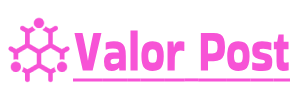5 mins read
Software as a Service (SaaS): Revolutionizing Business Operations
Software as a Service (SaaS) has revolutionized the way businesses operate. Here are 15 points on the impact of SaaS, along with their respective pros and cons:
SaaS Impact:
- Cost-Efficiency: SaaS eliminates the need for upfront software and hardware investments, reducing costs.
- Pros: Cost savings, scalability, and predictable subscription pricing.
- Cons: Ongoing subscription costs, potential for price increases.
- Accessibility: SaaS applications are accessible from anywhere with an internet connection.
- Pros: Remote work support, improved collaboration, and global accessibility.
- Cons: Dependency on internet connectivity, potential security concerns.
- Scalability: SaaS solutions can easily scale up or down to meet changing business needs.
- Pros: Flexible growth, adaptability, and reduced over-provisioning.
- Cons: Data migration challenges, potential integration complexity.
- Automatic Updates: SaaS providers handle software updates and maintenance, ensuring users always have the latest features and security patches.
- Pros: Reduced IT burden, enhanced security, and access to new features.
- Cons: Limited control over update timing, potential compatibility issues.
- Reduced IT Overhead: SaaS eliminates the need for extensive in-house IT infrastructure and support.
- Pros: Reduced IT costs, focus on core business activities, and expert support.
- Cons: Data privacy concerns, reliance on external providers.
- Rapid Deployment: SaaS applications can be deployed quickly, streamlining time-to-value.
- Pros: Faster implementation, quicker ROI, and competitive advantage.
- Cons: Data migration challenges, potential process disruption.
- User-Friendly: SaaS applications are often designed with user-friendliness in mind, reducing the learning curve.
- Pros: Faster user adoption, increased productivity, and better user experience.
- Cons: Limited customization, potential feature limitations.
- Data Security: SaaS providers invest in robust security measures, protecting data from threats.
- Pros: Improved data security, access controls, and compliance.
- Cons: Data privacy concerns, potential data breach risks.
- Collaboration: SaaS tools often include collaboration features, fostering teamwork and communication.
- Pros: Enhanced collaboration, real-time updates, and document sharing.
- Cons: Potential security vulnerabilities, data control concerns.
- Business Continuity: SaaS applications are typically hosted in redundant, high-availability environments, ensuring business continuity.
- Pros: Reduced downtime, disaster recovery support, and reliability.
- Cons: Limited control over uptime, potential service disruptions.
- Analytics and Reporting: SaaS solutions often offer advanced analytics and reporting features for data-driven decision-making.
- Pros: Improved insights, informed decision-making, and performance tracking.
- Cons: Data privacy concerns, potential complexity in data management.
- Subscription Models: SaaS typically operates on subscription models, making budgeting and planning easier.
- Pros: Predictable costs, reduced upfront investment, and flexibility.
- Cons: Ongoing subscription costs, potential budget constraints.
- Compliance: SaaS providers often maintain compliance with industry regulations, simplifying adherence.
- Pros: Easier compliance, reduced legal risks, and audit support.
- Cons: Limited control over compliance, potential challenges in highly regulated industries.
- Competitive Advantage: Businesses can gain a competitive edge by quickly adopting the latest SaaS solutions.
- Pros: Rapid innovation adoption, market leadership, and agility.
- Cons: Integration challenges, potential dependency on specific providers.
- Environmental Impact: SaaS can contribute to a smaller carbon footprint by reducing the need for on-premises data centers.
- Pros: Environmental responsibility, reduced energy costs, and sustainability.
- Cons: Limited control over data center practices, potential energy concerns.
Pros and Cons of SaaS:
Pros:
- Cost Savings: Reduced upfront costs and predictable subscription pricing.
- Global Accessibility: Accessible from anywhere with an internet connection.
- Scalability: Easily scale up or down to meet changing needs.
- Automatic Updates: Always have the latest features and security patches.
- Reduced IT Overhead: Eliminates the need for extensive in-house IT infrastructure.
- Rapid Deployment: Quickly deploy applications, reducing time-to-value.
- User-Friendly: Designed with user-friendliness in mind, reducing the learning curve.
- Data Security: Strong data security measures provided by SaaS vendors.
- Collaboration: Built-in collaboration features enhance teamwork.
- Business Continuity: High-availability environments ensure business continuity.
- Analytics and Reporting: Advanced analytics and reporting for data-driven decisions.
- Subscription Models: Predictable costs and easier budgeting.
- Compliance: SaaS vendors often maintain industry compliance.
- Competitive Advantage: Quick adoption of the latest innovations.
- Environmental Impact: Reduces the carbon footprint by minimizing data center use.
Cons:
- Ongoing Subscription Costs: Continuous subscription payments may accumulate.
- Dependency on Internet: SaaS reliance on internet connectivity can be a limitation.
- Data Privacy Concerns: Privacy issues may arise due to third-party data handling.
- Data Migration Challenges: Transferring data to SaaS solutions can be complex.
- Integration Complexity: Integrating SaaS solutions with existing systems may be challenging.
- Limited Control: Reduced control over software updates, uptime, and compliance.
- Potential for Price Increases: Subscription costs may rise over time.
- Potential Compatibility Issues: Automatic updates may introduce compatibility problems.
- Data Control Concerns: Collaborative tools can raise data control issues.
- Data Breach Risks: Security measures may not eliminate all data breach risks.
- Service Disruptions: Potential service disruptions may occur in SaaS environments.
- Feature Limitations: SaaS solutions may have limitations in terms of features.
- Data Management Complexity: Advanced analytics can add complexity to data management.
- Budget Constraints: Subscription models may lead to budget constraints.
- Dependency on Specific Providers: Overreliance on specific providers may pose risks.
SaaS has indeed transformed how businesses operate, offering a range of benefits, but it also brings its own set of challenges that organizations must consider. The choice to adopt SaaS should align with a business’s unique needs and goals.



